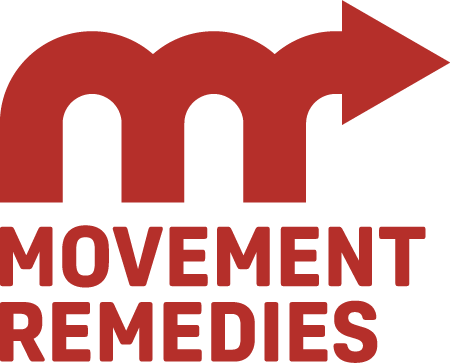Knowing Where to Begin with Movement After Pain
I really enjoyed receiving these questions about getting active with chronic pain from our Movement Remedies Community. If you have a question you would like answered in the blog, please email dk@movementremedies.org.
“If you could start with just one thing, what would you recommend that “thing” to be?”
I love this question, because when we are trying to start a new movement practice, the first step is the most important. It’s the cornerstone that lays the foundation for repetition and progress. If you choose a “thing” that is too ambitious, you run the risk of disappointment and the urge to give up. If you choose the wrong thing you can end up down a path you weren’t intending to follow. You want a “thing” that is both intentional and feasible.
First I ask my chronic pain movers to get really clear on their why. Why are we having this conversation about movement? I can give you a bunch of reasons that matter to me but we have to start from your own heart’s desires, as I talk about in my book. Make sure that your why has nothing to do with diet culture messaging or anti-fat bias that will perpetuate an unhealthy relationship with exercise. Look 5 years into the future and imagine the life you want to be living; what activities you’re enjoying. Then let’s work backwards and make sure that your movement practice supports “that” thing specifically. Your first “thing” should be the one that makes your heart sing.
“What are the benefits of consistency v. intensity of movement?”
I think this is connected to the first question because once you have your “thing” that you are working on, you probably wonder, “OK but how much and when do I do it?” Pilates by its very definition is a low intensity form of exercise. This is a big reason why it is so beneficial for people recovering from joint replacement surgeries or other joint pain. That being said, I also participate in weight training for myself – both because it is an activity I enjoy and also because I know that I am naturally losing muscle mass every year as a result of…you know…biology.
But when it comes to working with someone who experiences daily pain, consistency trumps intensity every time. I would rather have someone move for 5 minutes a day then 1 hour each week. In my own journey with pain, I notice a significant improvement in my mood and my sense of ease in my body when I make time for brief movement snacks throughout the day. This has been a difficult mindset shift for me after years of being entrenched in the philosophy that if exercise didn’t make me sweat or feel sore afterwards it wasn’t “enough.” When we really learn to listen, though, this isn’t a message our bodies are sending. It’s the result of external pressures and conditioning.
I once did an experiment for a month to find the minimum amount of movement I could do to still feel good in my body and prevent pain flare-ups. The answer was only about 10 minutes–but the quality of movement (mindfulness, intentionality) was super important. 10 minutes of distracted, just-get-it-over-with movement had no benefit.
“How do I know which movement is helping me and which movement is hurting me?”
This one deserves a longer conversation because I think the “hurting” word needs to be unpacked. I would argue that movement is always beneficial. Even if it comes with some discomfort, we are in the long run better off moving than not moving.
I would define “hurting” as movement that causes an injury. In order to do so, the movement would generally have to be something that applies a lot of force. I think there is an argument to be made, though, that some potentially “risky” or injury-prone activities, let’s say skiing for example, if they bring a person joy, are still worth pursuing.
If in the course of my movement practice, if I experience a flare-up of pain, I always ask myself “is it actually possible that what I am doing right now could damage my body?” I can’t tell you how many times I have been jogging and my knee started throbbing. When this happens my instinctive reaction is to panic and think I injured something. Then, I remember all the research (also in the book) about how running has been found to have no effect on the progression of knee osteoarthritis. In fact, consistent, moderate running has been linked to the thickening of cartilage. When I try to visualize a soft fluffy cloud inside my knee joint as I am running, the pain almost always goes away.
So I guess the short answer to this is to ask yourself these questions:
Is the movement something your doctor told you not to do?
Is it physically possible you are doing damage to your tissues during the movement?
If you change your mindset does the pain stop or change?
If you are doing something that causes discomfort, how does that compare to the joy you get from doing it? Is it worth the risk?
